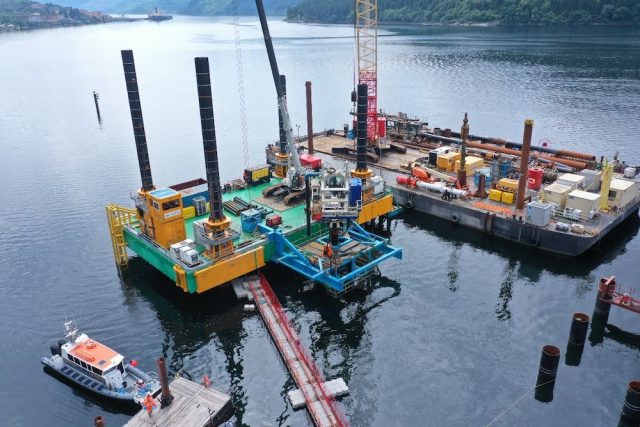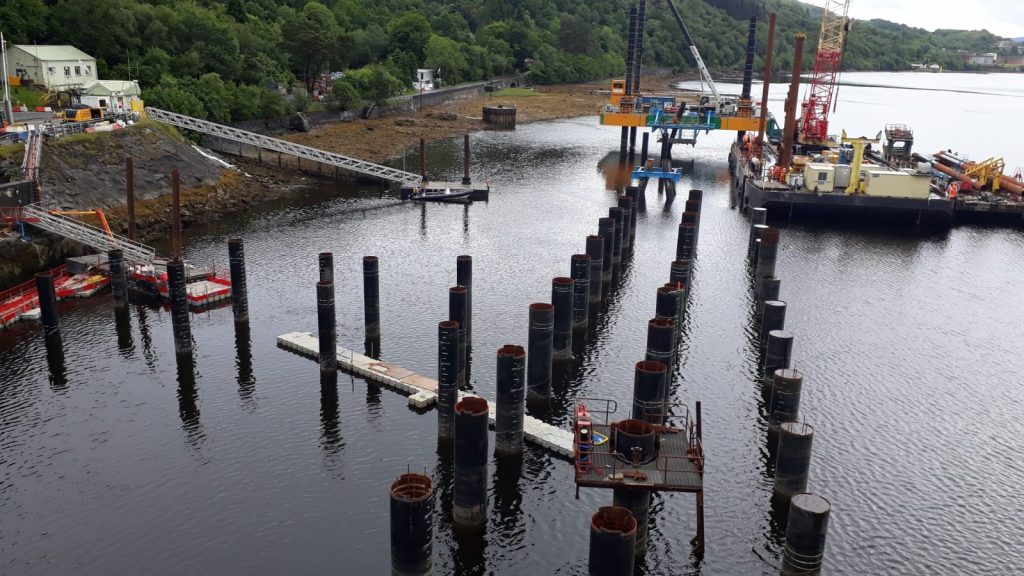
Glen Mallan was chosen as the site to support the Royal Navy’s surface fleet as it benefits from supplies of ammunition from Defence Munitions Glen Douglas, the largest weapons storage facility in western Europe. It can also handle the high volume of ammunition needed for the surface fleets.
We’re refurbishing the jetty as it’s reaching the end of its natural life. It was last upgraded in 1970 and the work we are carrying out will extend its life by up to 50 years. The jetty is also being refurbished to make it suitable for loading and unloading ammunition for the Royal Navy’s new aircraft carriers, HMS Queen Elizabeth and HMS Prince of Wales.
We’ve already demolished the previous jetty, which marks a significant milestone for the project as we can now start construction works. We’ve transported the waste from the demolition of the jetty on barges to recycling facilities on the Clyde to help minimise disruption to the public. We’re also using the materials we’ve recycled for construction.
Stages of the project

Other work we’ll be carrying out includes the installation of two modern pedestal cranes, fire-fighting equipment, stores, back-up generators and pre-fabricated modular buildings for offices. To secure the site we’re also installing new fencing and a CCTV system.
To help us with this project, we’re working in collaboration with VolkerStevin, Jacobs and local contractors. VolkerStevin have previously delivered vital infrastructure for Defence including the Queen Elizabeth Class Carriers infrastructure at HMNB Portsmouth.
Impact of COVID-19
Like everyone, we’ve been concerned about Coronavirus and how to keep everyone safe. Our primary concern is for the safety of our team who continue delivering critical infrastructure for Defence. This work is considered by the Government and MOD to be critical national infrastructure. It is going ahead safely with our staff and contractors following government guidelines and social distancing restrictions to help protect against Coronavirus. We’re also working closely with our contractors to monitor the situation and are in regular contact with our workforce.
This important work helps provide the Armed Forces with the capabilities they need to maintain Britain’s security in an ever-changing world.
2 comments
Comment by Stephen Harness posted on
Great to have helped a little to bring this forward. It’s good to see the reality of the photos emerging from the plans we all discussed.
Comment by Jim Spencer posted on
Why when the Carriers are base ported at Portsmouth as are a lot of the surface ships load and unload at these facilities? What happens if Scotland leaves the United Kingdom. Is this all part of the MODs budgeting and planning failures.